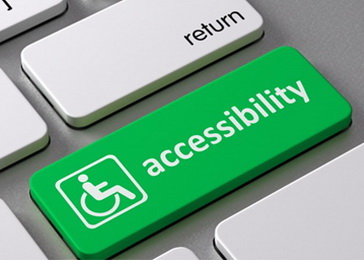 Author: Nevena Tarlanović (Social Inclusion Blog)
Author: Nevena Tarlanović (Social Inclusion Blog)
“This is a country for all our children,” say the lines of a well-known EKV song. Logic should indicate that this city should also be a city for all our children. But is it?
My day starts with strategic planning on how to get from point A to point B without injury, without slipping, without falling. All this because I am a person with a physical disability. Belgrade, the city I love, is often a “mine field” for me.
Accessibility is an elementary need for any living being wishing to be part of the collective that surrounds it, to participate as an equal, and to contribute to it. However, if their basic needs, such as movement, are impaired, we are faced a frequent issue, that of social exclusion that may produce a number of consequences. (…)
Example number one of public transport. In addition to workers of the city transport company with absolutely zero sensitivity towards the needs and issues of persons with disabilities, we are also faced with the problem of a very low number of low-floor buses.
Now imagine yourself using a wheelchair and trying to get to an important place in time, but there have not been any low-floor buses for a while, and you are, of course, late. Or an even worse example, if you could not even leave your home because of the lack of facilities in public transport.
The next issue creating difficulties for movement are high curbs, even those where certain interventions have been made, but inadequately, or to say it more precisely, poorly. I use a walker with four wheels and brakes, and every time I see a sidewalk I get the chills, because I know I will have to make a serious effort to get my walker up onto it. This requires strength of arms. My advice: start lifting weights, if you are using a similar assistive tool.
One thing I find concerning is that a large number of schools and faculties are inaccessible, begging the question of how we are supposed to get our education. Example: the Faculty of Mechanical Engineering, with all its innumerable stairs, looks from my perspective as if I’m about to conquer Mount Everest. So, if we are wondering why the majority of persons with disabilities are insufficiently educated, one reason lies in the inaccessibility of educational institutions. (…)
Social inclusion primarily involves physical presence, and that cannot happen without an accessible environment.
I believe that creating an accessible environment is a good path towards creating equality and eliminating prejudice and discrimination. Making ramps, lifts, low curbs and importing more low-floor buses does not mean conceding to “special needs” – it means equality for all.
The text in its entirety can be found at the Social Inclusion Blog.
 Government of the Republic of Serbia
Government of the Republic of Serbia















 pdf [271 KB]
pdf [271 KB]
Leave a Comment